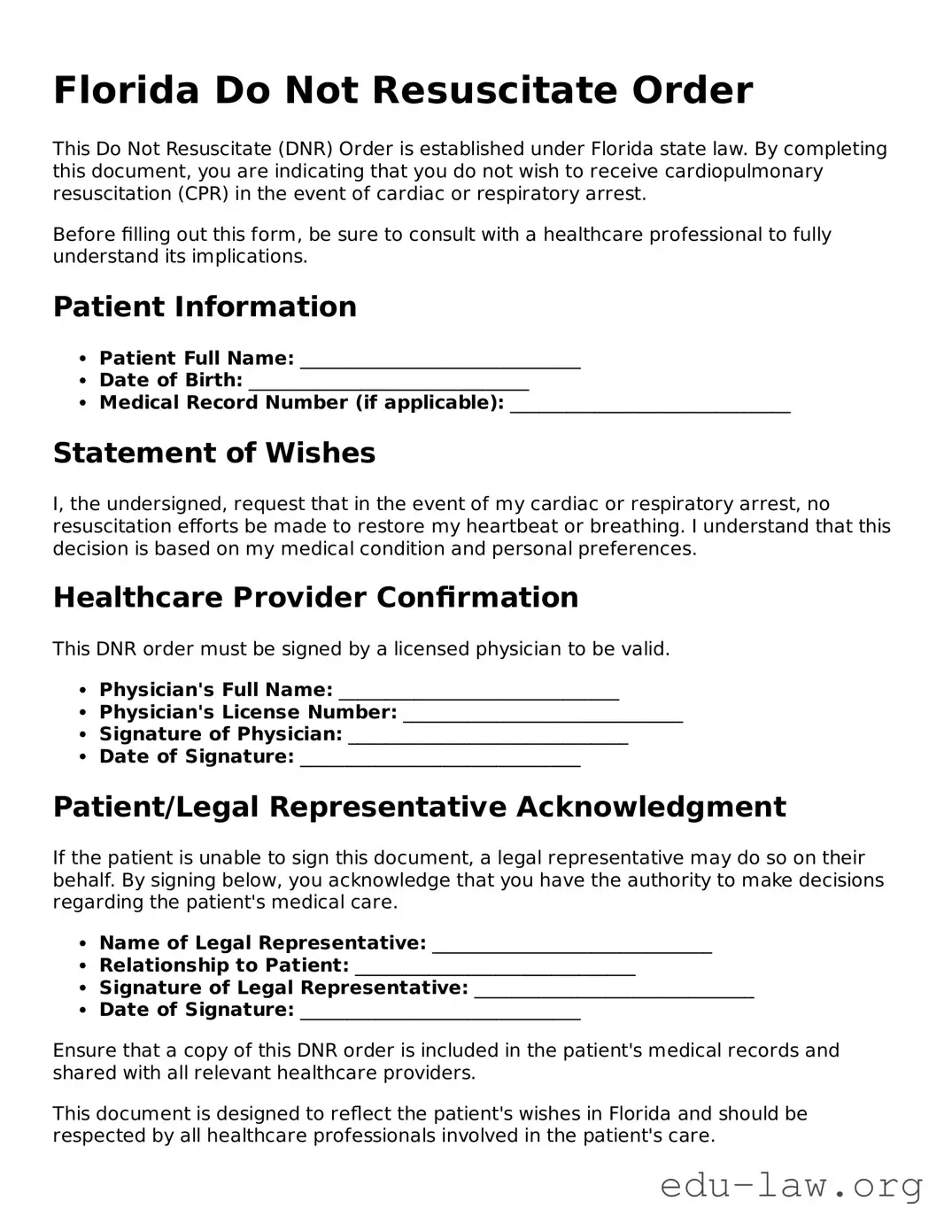What is a Florida Do Not Resuscitate Order (DNRO)?
A Florida Do Not Resuscitate Order is a legal document that allows a patient to refuse cardiopulmonary resuscitation (CPR) in the event of a medical emergency. This order is particularly important for individuals with serious health conditions who wish to avoid aggressive life-saving measures that may not align with their end-of-life preferences.
Who can complete a DNRO in Florida?
The DNRO can be completed by a competent adult, or a legally authorized representative on behalf of an adult. It's essential that the person completing the form fully understands its implications and has discussed their wishes with healthcare providers and family members.
How do I get a Florida DNRO form?
The DNRO form is available through various healthcare providers, hospitals, and the Florida Department of Health's website. It's recommended to discuss obtaining the form with a healthcare professional who can offer guidance tailored to your medical situation.
Does a DNRO need to be notarized?
No, a Florida DNRO does not need to be notarized or witnessed to be valid. However, it is important that the form is properly filled out and that the patient or authorized representative makes a copy available to healthcare providers, such as doctors and emergency personnel.
Where should I keep my DNRO form?
Keep the DNRO form in a place where it can be easily accessed in an emergency, such as on the refrigerator or in a medical file at home. Additionally, providing copies to family members and healthcare providers ensures that your wishes are clear and can be respected during critical moments.
Are there any costs associated with completing a DNRO?
There are no costs associated with obtaining or completing a Florida DNRO. This document is a free resource provided to ensure that individuals can express their end-of-life care preferences without financial barriers.
Can a DNRO be revoked or changed?
Yes, a DNRO can be revoked or modified at any time by the individual who created it. To revoke the order, simply destroy the original document and inform your healthcare providers of the change. If you choose to create a new DNRO, ensure it clearly indicates your current wishes.
What if I do not have a DNRO?
If you do not have a DNRO and suffer a medical emergency, healthcare providers are required to perform life-saving measures, including CPR, unless there is a clear indication of a valid DNRO. Discussing your wishes with family and healthcare providers is crucial if you choose not to complete a DNRO.
Is a DNRO valid in other states?
A Florida DNRO is generally honored in other states, but practices may vary. Ensure you review the regulations of the specific state where care is being provided. Carrying a copy of the DNRO along with any additional state-required documentation may help avoid confusion for healthcare providers outside Florida.
